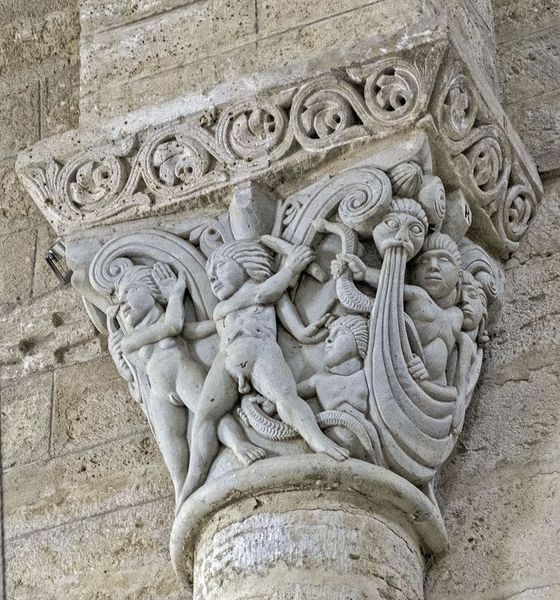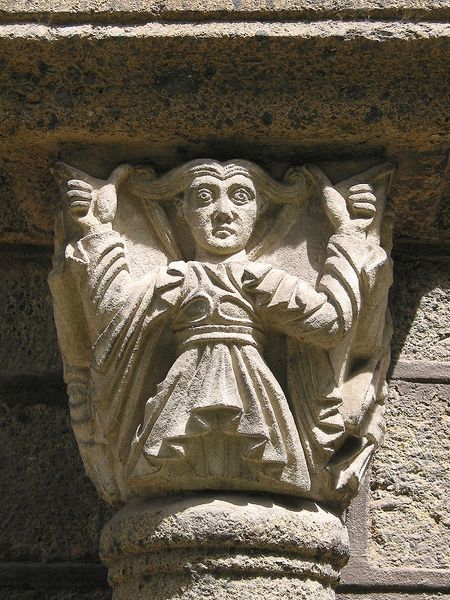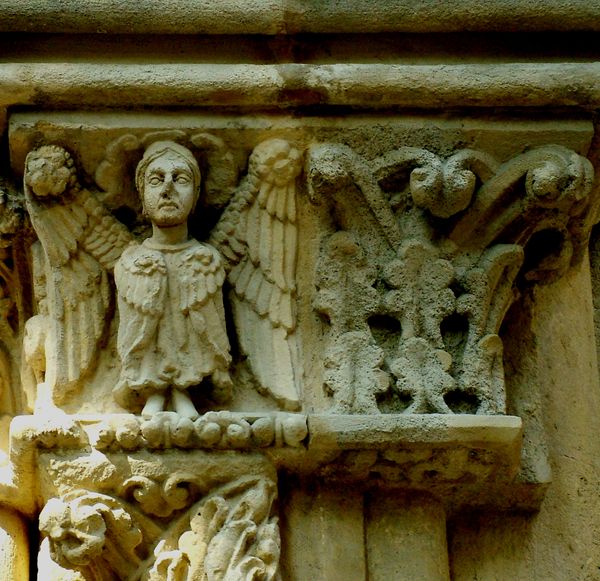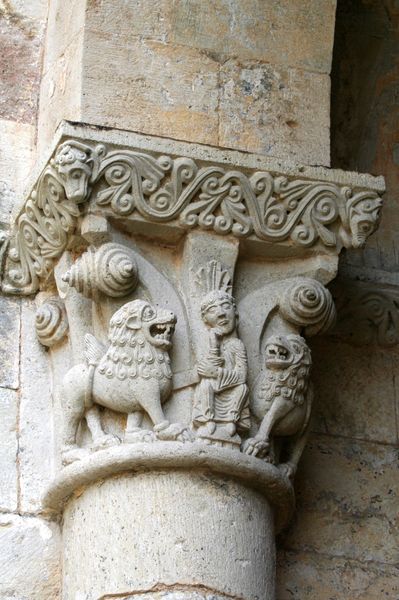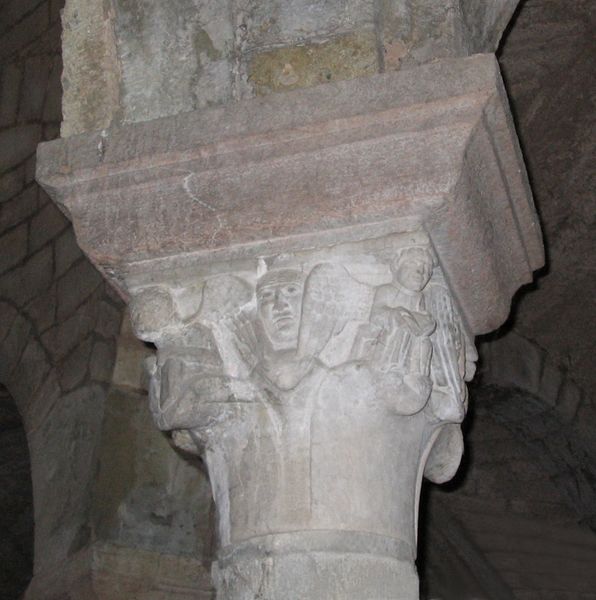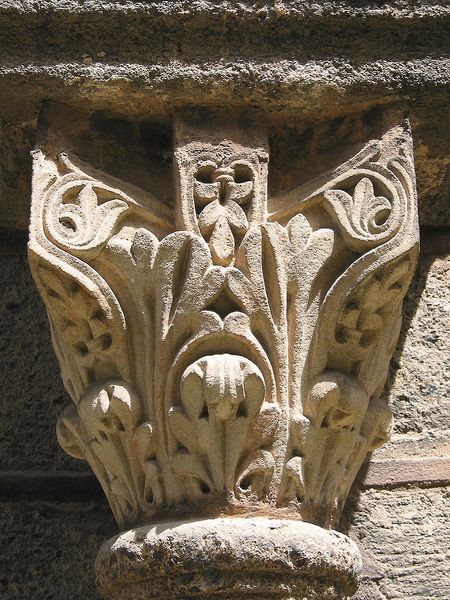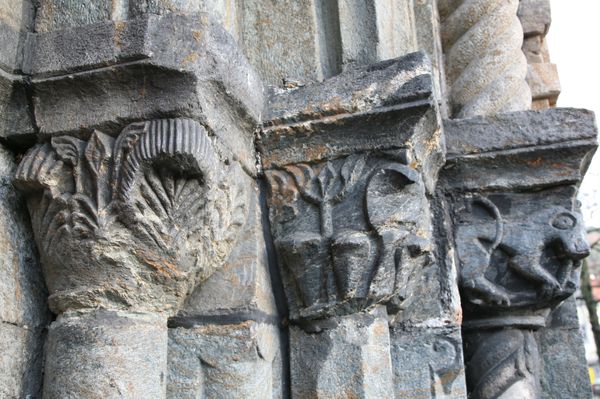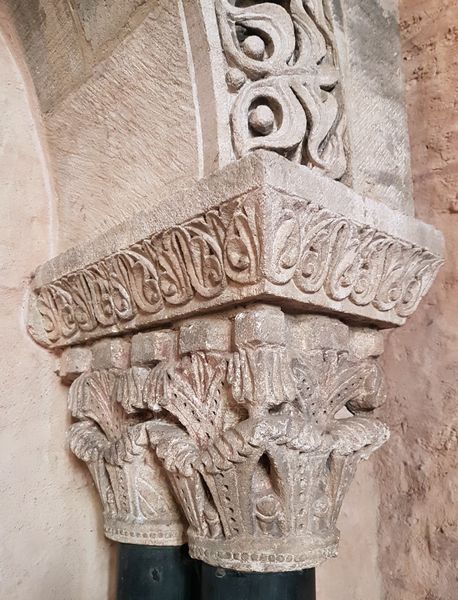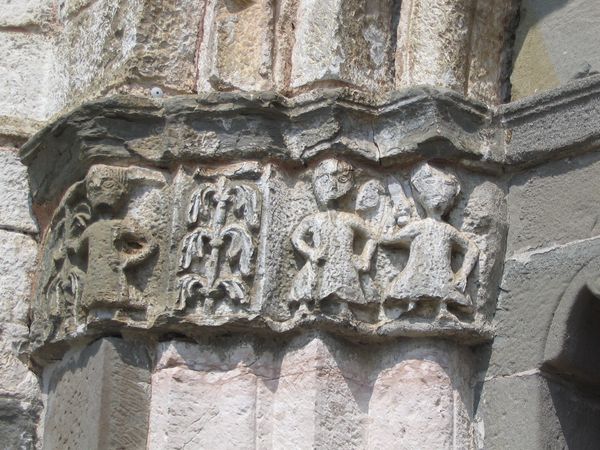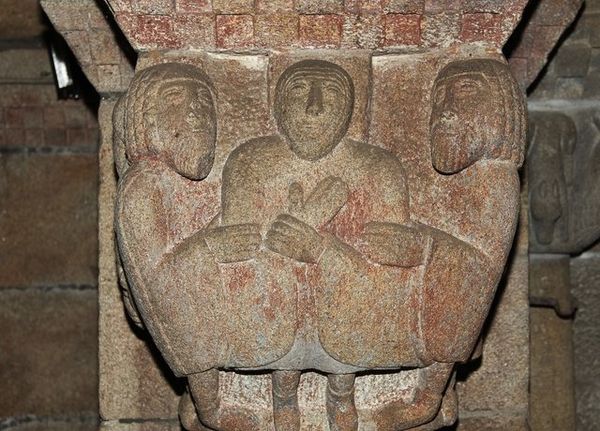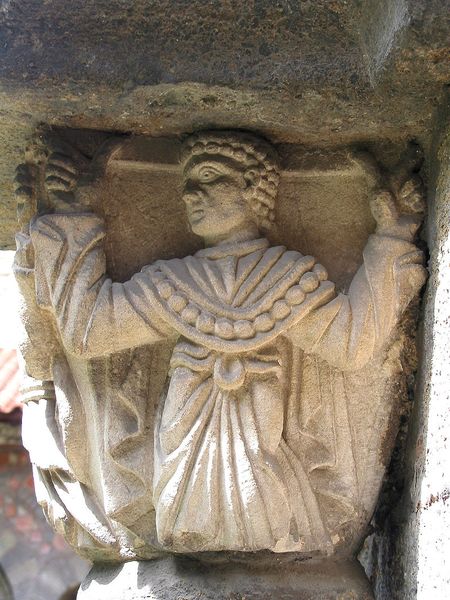
carving, relief, sculpture
#
carving
#
sculpture
#
relief
#
figuration
#
romanesque
#
sculpture
Copyright: Public domain
This stone capital, made in Spain in the Romanesque period, features a series of carved figures. The material here is critical. Stone is weighty and permanent, and to carve it is extremely labor-intensive. This means the image is slow to make and destined to last. The question is: why this image? Why did the patrons and the sculptors of the Urgell Cathedral think it important to laboriously produce this scene? The rough carving emphasizes the figures. At the center, we see a squatting figure that seems part human, part animal. It might be read as a commentary on the instability of the human condition, or perhaps a meditation on sin and penance. Whatever the symbolic intent, the stone carving is an evocative reminder of the cultural and social values invested in this place, by the people who made it. It demonstrates how craft and creative practices shape and define broader historical narratives.
Comments
No comments
Be the first to comment and join the conversation on the ultimate creative platform.

